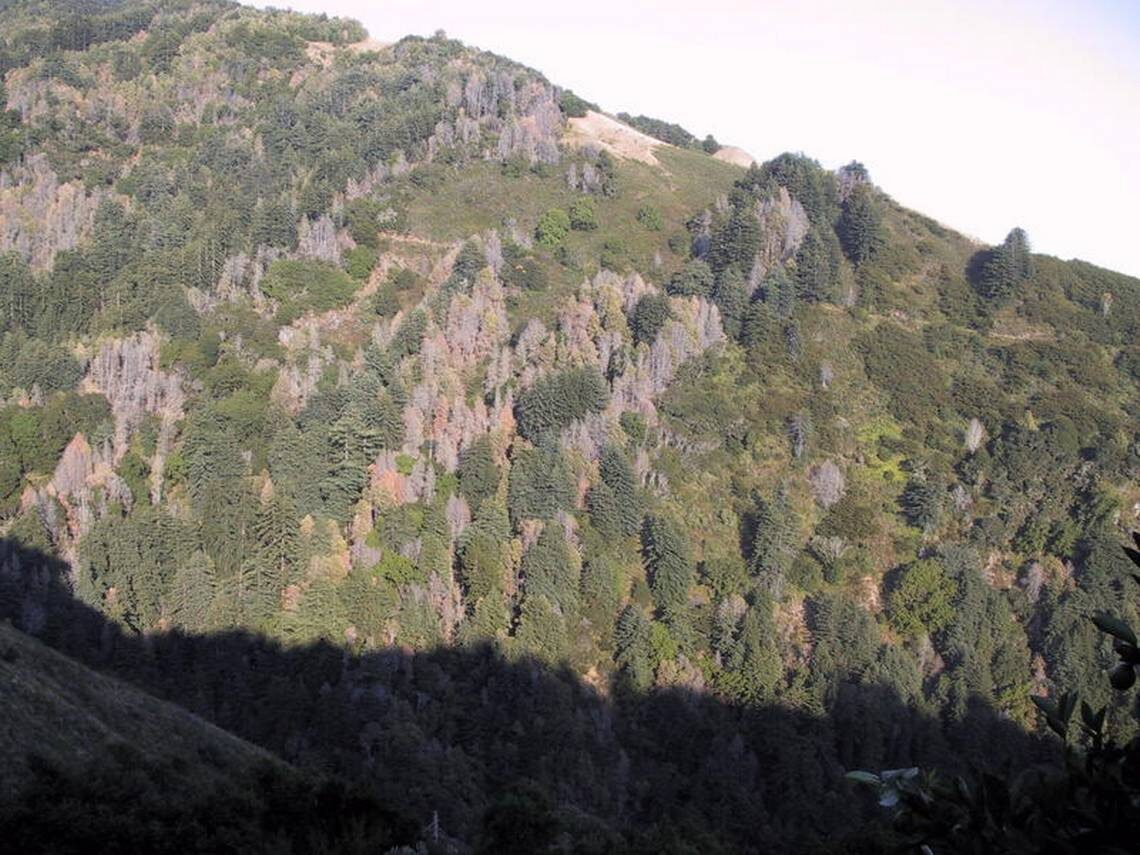
Nearly half of forest ecosystems around the world face "stand-replacing disturbances" — hazards that threaten to kill all of the trees in a localized region, such as fires, extreme weather, and disease. The spread of nonnative insects and pathogens has also reshaped North American forests, and today, a disease outbreak is sweeping along the U.S. West Coast.
Sudden oak death, caused by the plant pathogen Phytophthora ramorum, has reached epidemic proportions in California and Oregon since it first arrived in the San Francisco Bay area in about 1990. But the regional extent of both the disease and related tree mortality is not clear, hampering forest managers' responses to the epidemic and to other threats, as die-offs can increase fuel loads and fire severity, reduce forest productivity, and convert forests from carbon sinks into carbon sources.
Cobb et al. modeled the infection and mortality rate in forests facing P. ramorum invasions by combining observations from plot networks on the ground, geospatial data, and existing data sets describing tree cover and pathogen distribution. The pathogen can infect the leaves and stems of more than 130 species of trees, shrubs, and ferns, but in the new study, the authors focus on the four most affected tree species: California bay laurel, tanoak, coast live oak, and California black oak.
The team monitored more than 10,000 stems across several hundred plots in California and Oregon, tracking infections, climate, and topography to determine how various factors influenced disease progression in all four species. As of 2012, some 166.2 million stems within the study plots were infected. The majority (95.2 million) were bay laurel stems, which can typically survive P. ramorum infections, making the species a major source of infections for other trees.
Given the mortality rates for the other three species, the authors estimate that the disease has killed nearly 48 million stems in the past 20 years, including nearly 39 million tanoak stems alone. That's a mortality rate on par with other mass tree die-offs in the western United States due to drought and insect outbreaks, the authors note. Invasive pathogens tend to grow exponentially, meaning these problems are likely to compound in the coming decades. But prevention and treatment programs in Oregon involving culling infected trees could serve as an inexpensive and effective model for the region to keep the plant pathogen in check, according to the authors. (Earth's Future, https://doi.org/10.1029/2020EF001500, 2020)
Citation: Wheeling, K. (2020), Sudden oak death taking a toll on U.S. West Coast, Eos, 101, https://doi.org/10.1029/2020EO147536. Published on 29 July 2020.



Reader Comments
White Oaks are racist, and Tan Oaks aren't black enough.